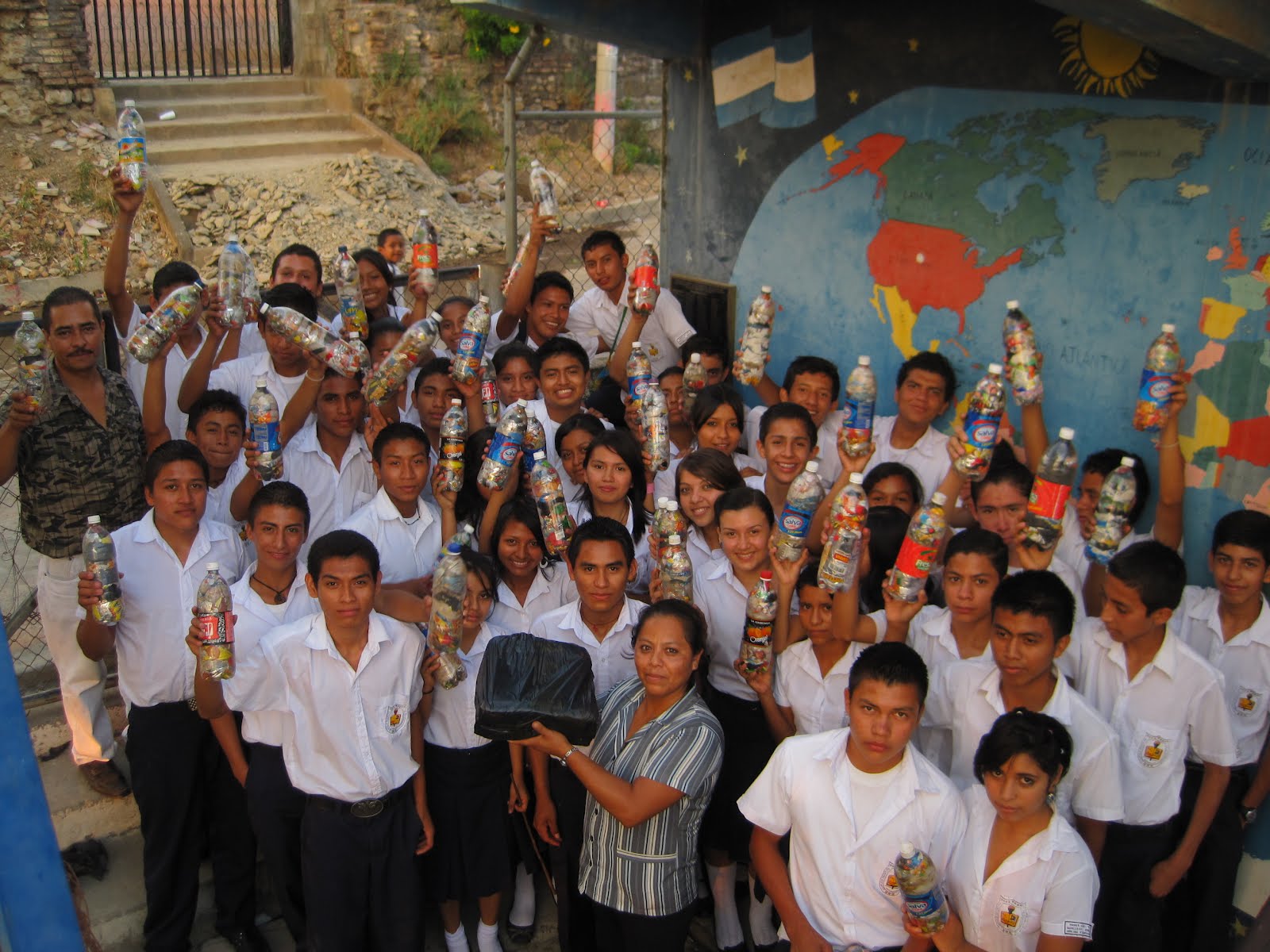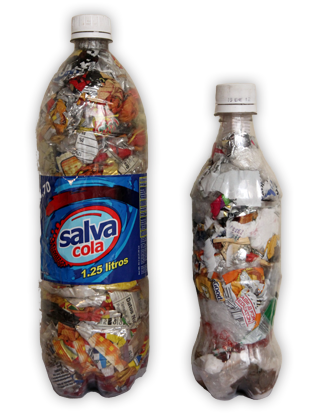
- Sustainable Planet -
- 3mins -
- 1,215 views
Bottle schools: utilising trash for the building blocks of education
More than 100 Guatemalan schools, built from discarded plastic bottles stuffed with trash that can not be recycled, are helping children get an education while cleaning up the environment.
Bottle schools are built using “eco-bricks” — plastic bottles stuffed with inorganic trash
While schools are possibly the most important structures we can build, they often go unbuilt solely due to a lack of available construction materials. However, the abundance of discarded plastic bottles has been making all the difference to communities in rural Guatemala.
Since October 2009 communities in Guatemala have completed 116 successful bottle schools
Hug It Forward, co-founded in 2009 by Zach Balle, Heenal Rajani and Joshua Talmon, is a grassroots organisation that helps to empower communities in Guatemala to build “bottle schools”. These are schools built using “eco-bricks” — plastic bottles stuffed with inorganic trash. Entire communities are coming together to build a more sustainable educational infrastructure for their future.
These bottle school projects are community-led, and it is the community members who volunteer all unskilled labour needed for the construction.
Since October 2009, communities in Guatemala have completed 116 successful bottle school projects, at an average cost of $6,500 (€5,310/£4,637) per classroom. In May 2012 the charity completed its first project outside Guatemala, in El Salvador.
Before Hug It Forward will issue any funding for materials, many community meetings take place, the community must complete the application process, and the community has to collect at least half of the 6,500 plastic bottles required for construction of their new bottle school, and stuff them with inorganic waste from their immediate environment.
The local municipality then pays for the two skilled masons needed to build the school, and the Ministry of Education pays for all teachers, ensuring that these institutions also have a stake in the project.
Source: SculptTheFuture.org

What is a Bottle School?
A Bottle School is:
- Green Bottle schools are schools built using plastic bottles stuffed with inorganic trash.
- Safe Bottle schools are built using tried and tested post and beam construction.
- Solid The foundations, columns and beams are made from concrete reinforced with rebar.
- Local The difference with traditional construction is that instead of cinder-blocks, the walls are made using “eco-bricks”.
- Cheap, Clean and Educational Bottle schools are much cheaper to build than traditional schools, they clean up the environment, teach lessons about environmental sustainability, and involve the entire community in their construction, resulting in a sense of pride and ownership.
‘Our goal is to share the bottle school technology so that anybody anywhere in the world can create their own bottle school, wherever there is a need.
‘To further the realization of this goal, Hug It Forward volunteers have created a Bottle School Manual, which is a free open source step-by-step guide to constructing a bottle school in your community.’


